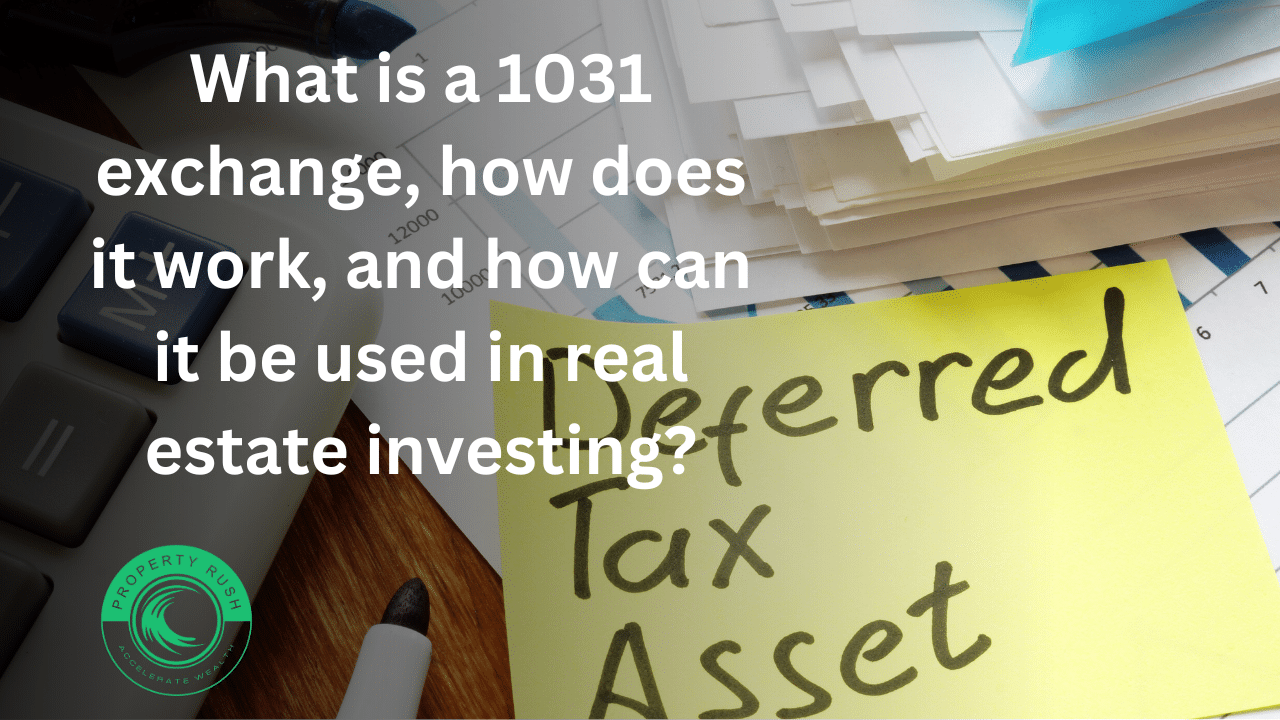Investing in real estate can be a lucrative way to build wealth, but it’s also important to consider tax implications. One strategy that many real estate investors use to defer taxes is a 1031 exchange. In this blog, we’ll explain what a 1031 exchange is, how it works, and provide some examples of how it can be used in real estate investing.
What is a 1031 Exchange?
A 1031 exchange is a tax-deferred exchange that allows investors to sell one investment property and purchase another “like-kind” property without paying capital gains taxes on the sale of the original property. The term “like-kind” is often misunderstood and does not mean that the properties have to be identical. Rather, the properties must be of the same nature or character, even if they differ in quality or grade.
How Does a 1031 Exchange Work?

In a 1031 exchange, the investor must follow specific rules to defer taxes. First, the sale of the original property must be completed, and the proceeds must be held by a qualified intermediary (QI). The QI is a third party that holds the funds until they can be used to purchase the replacement property. The investor has 45 days from the sale of the original property to identify the replacement property, and the purchase must be completed within 180 days.
One important thing to note is that any cash or other property received by the investor during the exchange is subject to capital gains tax. To avoid this, the investor can use a “reverse exchange,” where they purchase the replacement property before selling the original property.
Examples of 1031 Exchanges
Let’s say that an investor owns a rental property that has appreciated significantly in value. The investor wants to sell the property and purchase a new one to continue generating rental income. If the investor were to sell the property outright, they would owe capital gains tax on the profit. However, by using a 1031 exchange, the investor can defer those taxes and use the proceeds from the sale to purchase a new property. This allows them to continue investing in real estate without losing a significant portion of their profits to taxes.
Another example of a 1031 exchange is a business owner who owns a commercial property that they use for their business. The owner wants to retire and sell the property, but they don’t want to pay capital gains tax on the sale. By using a 1031 exchange, the owner can sell the property and use the proceeds to purchase a new commercial property that they can then lease out to another business. This allows them to defer taxes and continue earning income from their investments.
Conclusion
A 1031 exchange can be a powerful tool for real estate investors who want to defer taxes and continue growing their portfolios. However, it’s important to follow the rules and work with a qualified intermediary to ensure that the exchange is completed correctly. As with any investment strategy, it’s also essential to consult with a tax professional to understand the potential tax implications of a 1031 exchange.
References:
- “1031 Like-Kind Exchanges,” IRS, accessed February 23, 2023, https://www.irs.gov/businesses/small-businesses-self-employed/like-kind-exchanges-real-estate-tax-tips.
- “Understanding 1031 Exchanges,” Nolo, accessed February 23, 2023, https://www.nolo.com/legal-encyclopedia/understanding-1031-exchanges.html.






